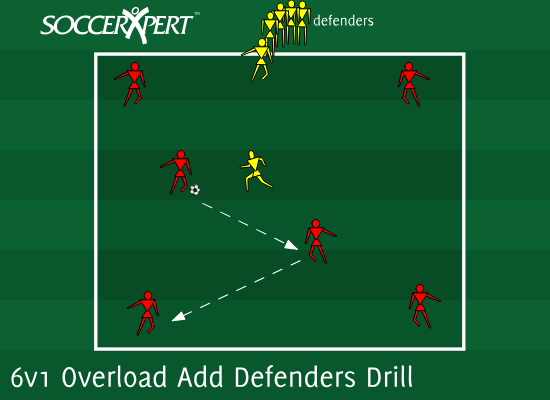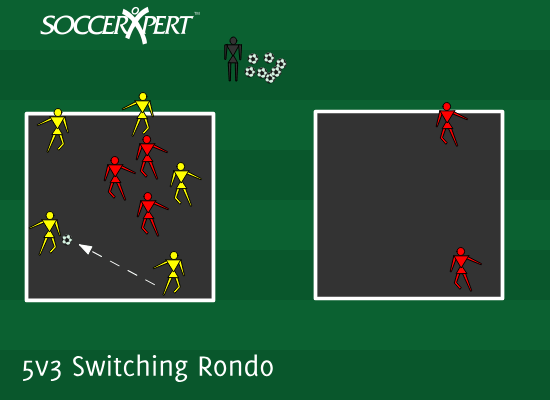Soccer Receiving and Turning Drills
SOCCER RECEIVING DRILLS, SOCCER RECEIVING AND TURNING TRAINING SESSIONS, RECEIVING IN SOCCER, KIDS SOCCER TURNING, TURNING RECEIVING IN YOUTH SOCCER
Soccer receiving and turning drills to improve player's 1st-touch that often determine the direction of the attack.
Soccer Receiving and Turning Drills
Receiving the ball effectively is key to maintaining possession and setting up successful plays in soccer. This page offers drills to help players improve their first touch, control, and positioning under pressure.

6v1 Overload Add Defenders Drill
This drill builds players' ability to think quickly and adapt as defensive pressure increases. Starting easy with six attackers against one defender, the drill gets harder each time a new defender enters. Players learn to recognize space, make faster decisions, and adjust their positioning as numbers change. The attacking team develops creativity and problem solving skills as they figure out how to keep possession against growing pressure. Defenders work on coordination and learn to press as a unit. The transition element is huge because when the ball changes hands, players must instantly switch their mindset from attack to defense or defense to attack. This mirrors real game situations where numerical advantages shift and players need to respond immediately.

5v3 Switching Rondo
This drill trains players to recognize when possession is lost and react instantly by switching fields of play. The attacking team learns to keep the ball under pressure in tight spaces while the defending team works on winning possession and immediately playing forward. The switching element teaches players to read the game and anticipate transitions. Players must communicate who stays and who goes when the switch happens, building decision making skills under pressure. The numerical advantage for attackers creates confidence in possession while defenders learn to press intelligently when outnumbered. Moving between grids forces players to stay mentally engaged even when they're not directly involved in the current action. This back and forth rhythm mirrors real games where play shifts from one area of the field to another.